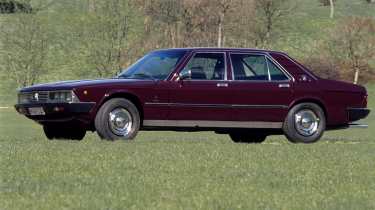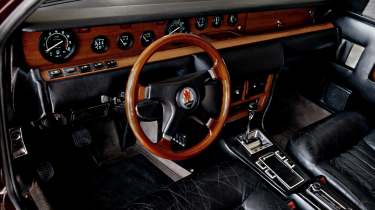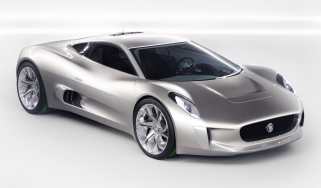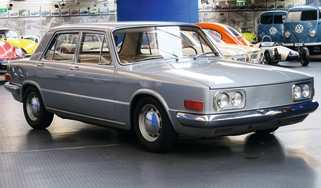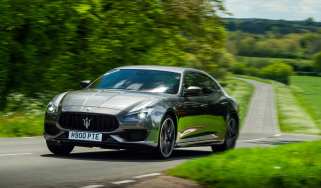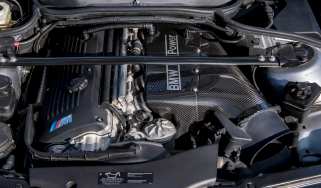Maserati Quattroporte II – dead on arrival
Progress on this Citroën SM-derived four-door stalled when the French firm faltered in the mid-’70s
The original Maserati Quattroporte of 1963 was a Frua-styled, V8-powered saloon accurately summed up by the words in an Italian-market ad that said it was ‘fast, elegant, comfortable, sober’. In 1968 Citroën took control of Maserati and the following year the Quattroporte was retired without replacement. But the French company had big plans for its new acquisition and they included an all-new four-door, the genes of which would arrive in 1970 when Citroën announced a bold new grand touring coupe, the SM.
Under the flying-saucer styling, the SM married the far-sighted chassis systems of the DS to a new 2.7-litre V6, developed by Maserati in double-quick time using its own V8, the one found in the old Quattroporte, as a starting point. For reasons that might never be explained, the SM became the darling of heavy-handed political leaders, boasting Idi Amin, Haile Selassie, Leonid Brezhnev and the Shah of Iran as owners. In its early days, however, the first prominent politician to declare a fondness for the SM was car-loving French president Georges Pompidou, who commissioned Citroën to build a longer version for state duties.
> Lancia Fulvia Coupé – dead on arrival
Chapron was subcontracted to make this a reality and in 1972 two extended-wheelbase, four-door convertible SMs were delivered to the Élysée Palace. Then, later in ’72, and having got its eye in with these presidential prototypes, Chapron announced the SM Opera, a four-door saloon with 30cm let into the coupe’s wheelbase. This was the starting point for the second-generation Quattroporte. Maserati upped the capacity of the V6 to 3 litres and widened the rear track, but this was to be, to all intents and purposes, an Italianised take on the four-door SM, right down to the front-wheel-drive chassis, oleopneumatic suspension, Citroën’s aggressively self-centring DIRAVI hydraulic steering, and a dashboard that used many SM bits.
On the outside the SM parts catalogue was raided for the door handles and glassed-in headlights, but the rest of it was to a unique style created by Bertone’s Marcello Gandini that looked like a badly drawn Mk2 Granada. Working through the four qualities ascribed to the original Quattroporte, the new model looked certain to be comfortable, especially given the amount of space in the back permitted by the front-wheel-drive powertrain. You could also argue that it appeared sober, though elegant was much more of a stretch. And there was a really big problem with the fourth word on that list: fast.
The original SM was famously not a fireball and the new Quattroporte, even with an engine capacity stretch to wring out 210 horsepower, wasn’t shaping up to have the kind of performance expected of a Maserati. So in 1974 Citroën authorised the Italians to develop a new V8 based on the V6 they had developed from an old V8. It probably made sense at the time. The result was a 4-litre prototype making somewhere around 275bhp, which was installed into an SM for testing. Unfortunately, Citroën went bankrupt shortly afterwards and in 1975 Maserati was sold to De Tomaso, who scrapped the V8 project and, eventually, the car it was destined for.
But there’s a twist because, while this page generally deals with cars that got far along the development process and died before they reached the showroom, the Quattroporte II did, technically, go on sale. Maserati never got around to homologating it for sale within the European Economic Community, and De Tomaso lacked either the funds or the inclination to do anything about that, but it was offered in Spain, which was yet to join the EEC, and the Middle East. It’s generally accepted that just 12 V6-powered cars were made, plus one prototype.
As for the V8, when that plan was cancelled the lone running engine was removed from the SM test hack and put into storage, only to be rescued and revived some 40 years later, and in 2009 a French Citroënista was able to install it once again in the nose of an SM.
This story first featured in evo issue 310.
